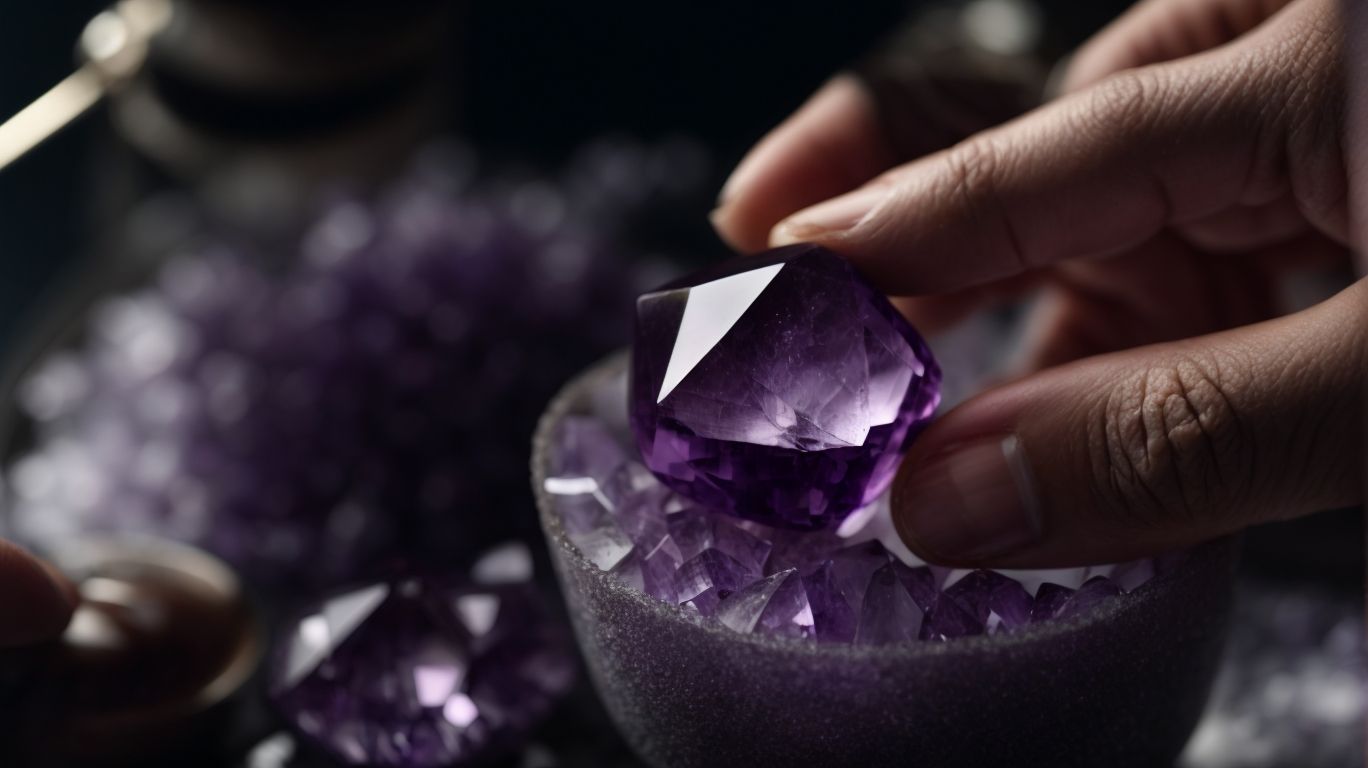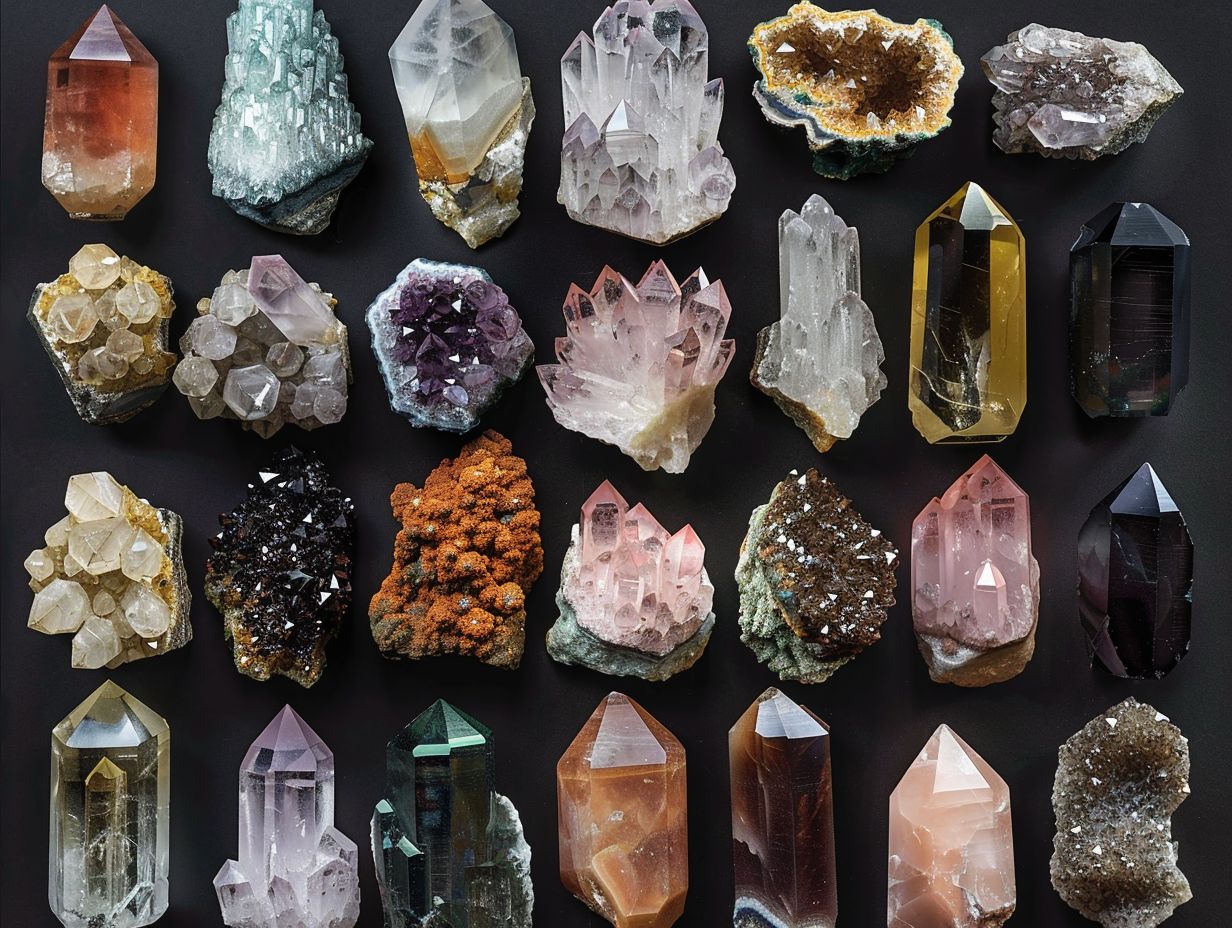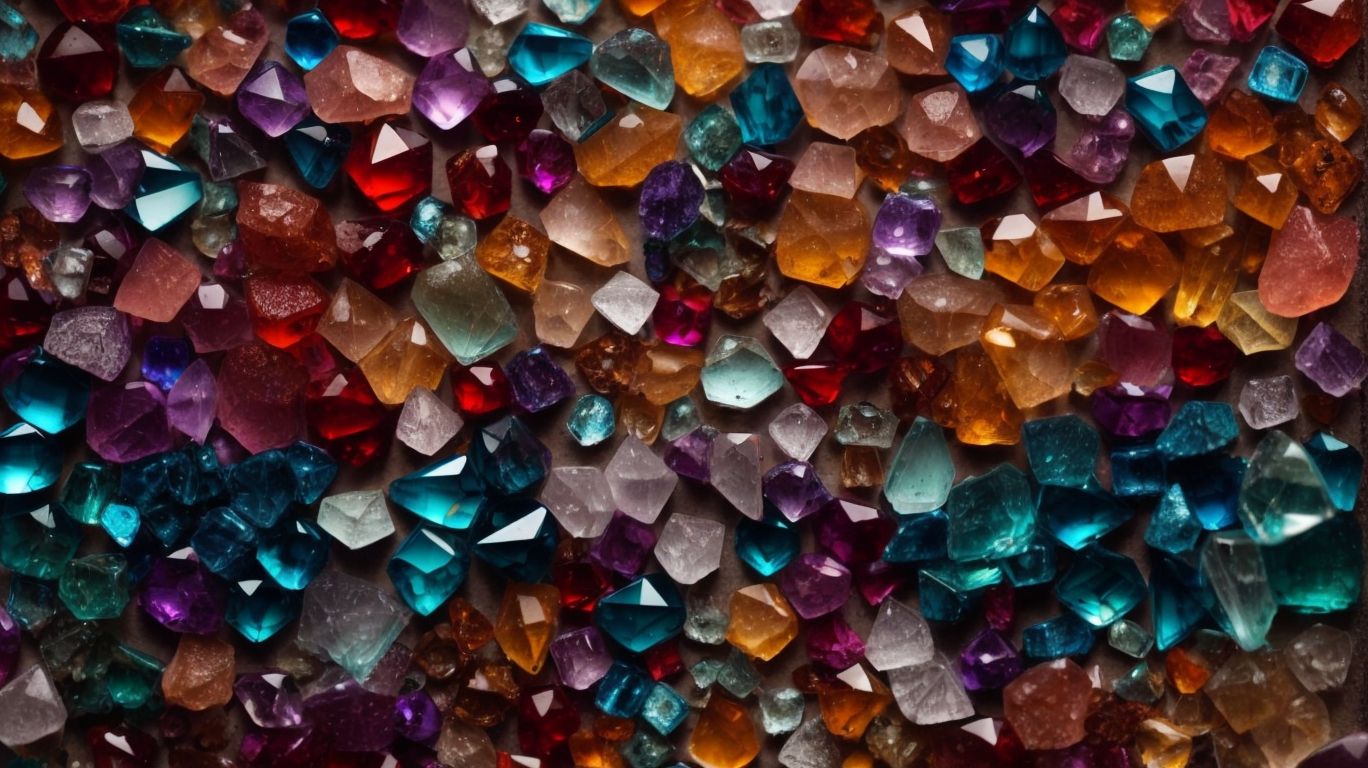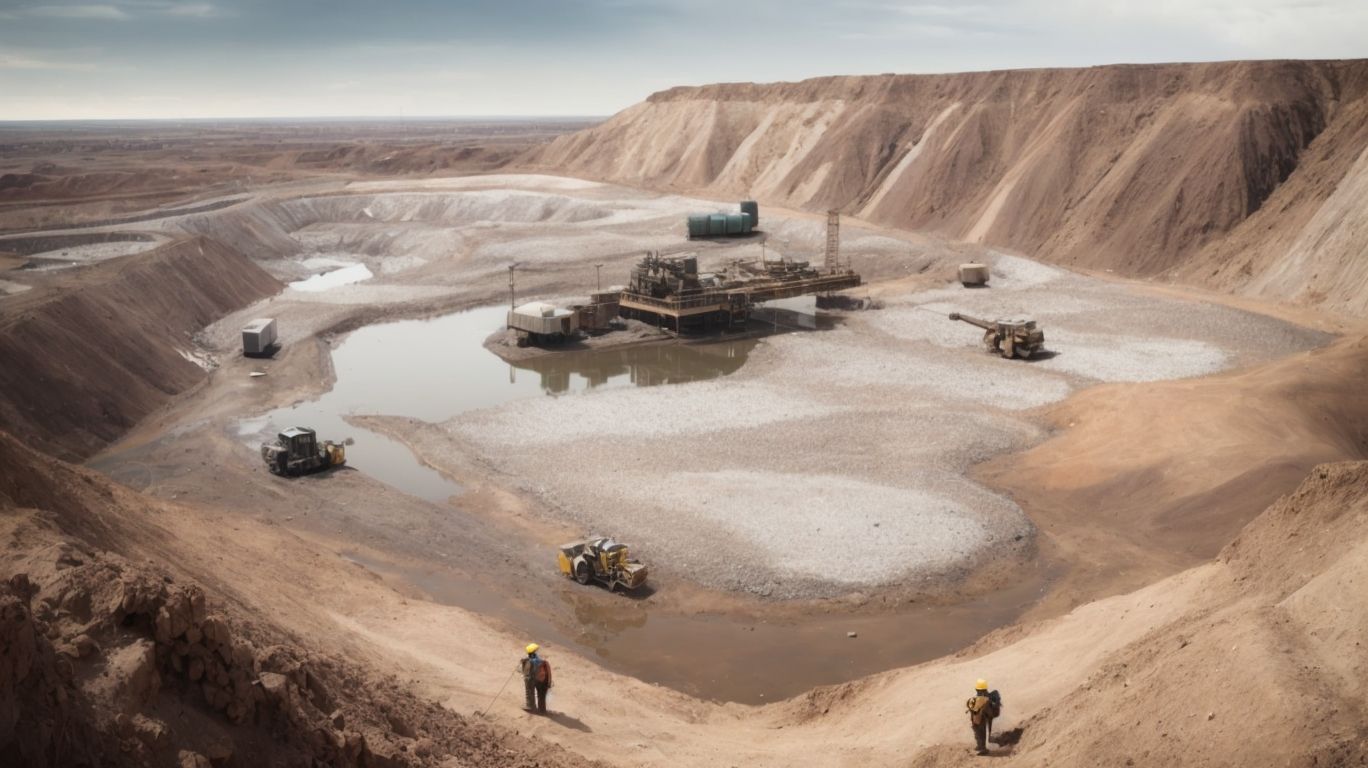
Finding Amethyst Crystals Near You: A Local Mining Guide
Are you fascinated by the beauty and energy of amethyst crystals? If so, you may be eager to learn more about where to find these stunning gems and how to mine them yourself.
In this comprehensive guide, we will explore the geographical locations and natural settings where amethyst crystals can be found. We will also discuss the tools needed for successful mining, the different types of amethyst crystals you may come across, and the benefits of mining for these precious stones.
Discover safety precautions, tips for finding amethyst crystals, and advice on how to clean and care for them. Find valuable insights on how to embark on your own amethyst mining adventure!
What Is Amethyst?
Amethyst is a stunning purple variety of quartz known for its striking color and beautiful crystal formations.
Its captivating shade ranges from deep violet to pale lavender, making it a highly sought-after gemstone in the jewelry industry. Geologically, amethyst forms in geodes or cavities within igneous rocks, with its distinctive color derived from trace elements like iron and manganese during the crystallization process.
The unique crystal structure of amethyst allows it to be easily faceted, enhancing its luster and brilliance. Apart from its aesthetic appeal, amethyst is also prized for its believed metaphysical properties, attracting those interested in its healing energies and spiritual benefits.
Where Can You Find Amethyst Crystals?
Amethyst crystals can be found in various locations, including state parks, mountains, and local mines near your area.
State parks like the ones in Colorado or Arizona offer visitors a chance to marvel at the natural beauty of amethyst formations in their raw, untouched states. Mountainous regions, such as the Rocky Mountains or the Appalachians, are known for hosting amethyst deposits that have intrigued geologists and crystal enthusiasts for decades.
Local mines scattered across different regions provide a unique opportunity for individuals to participate in mining expeditions and uncover their own precious amethyst specimens, making for a truly hands-on experience in the world of crystal exploration.
Geographically
Geographically, amethyst crystals are commonly discovered in regions rich in mineral deposits where enthusiasts can dig, rock hunt, and uncover these precious gemstones.
The geological aspects of amethyst formations vary depending on the region, with certain areas renowned for producing exceptionally vibrant and large crystals. Mining techniques play a crucial role in extracting these gems, requiring a delicate balance of precision and care to avoid damaging the crystals. The thrill of hunting for amethyst specimens lies in exploring the earth’s hidden wonders and witnessing the unique geological processes that have shaped these beautiful crystals over millennia.
In Nature
In nature, amethyst crystals can be found within geodes, caves, and other natural formations, offering a unique and captivating exploration experience for enthusiasts.
These stunning purple gemstones are often tucked away in hidden crevices, waiting to be discovered by those who venture deep into the earth’s depths. The allure of finding amethyst geodes lies in their rarity, making each find a thrilling and special moment for crystal collectors and nature lovers alike. The process of uncovering these hidden treasures involves a sense of wonder and excitement as one carefully excavates the geological formations, unveiling the beauty that has been formed over millions of years.
What Tools Do You Need for Amethyst Mining?
For amethyst mining, you will need a variety of tools and equipment to aid in prospecting, field trips, and ensuring safety during your exploration.
One of the essential prospecting tools for amethyst mining is a geologist’s hammer, which is used to break rocks to examine their content and quality. Safety equipment such as sturdy boots, helmets, and gloves are crucial to protect miners from potential hazards like falling rocks or rough terrains. Field trip essentials like a compass, GPS device, and first aid kit should always be carried to navigate through the mining site effectively and handle emergencies efficiently.
Basic Tools
Basic tools for amethyst mining include hammers, chisels, and brushes for extracting, cleaning, and collecting quartz specimens.
In amateur amethyst mining activities, hammers play a crucial role in breaking down rocks to reveal hidden crystals, while chisels help in precise extraction without damaging the specimens. Brushes are essential for gently removing dirt and debris from the surface of quartz crystals, ensuring they retain their natural beauty. Proper handling and maintenance of these tools are vital to prevent accidents and ensure longevity. Understanding the right techniques for using these tools can significantly enhance the overall collecting experience, making it more rewarding and enjoyable for enthusiasts.
Specialized Tools
Specialized tools for amethyst mining include UV lights, rock hammers, and magnifying lenses that aid in locating rare crystal clusters and veins within rock formations.
UV lights are instrumental in illuminating fluorescent minerals like amethyst, making it easier to spot them amidst other rocks. Rock hammers, on the other hand, are crucial for breaking down hard rock to access hidden amethyst veins. Magnifying lenses help prospectors inspect small details and characteristics of amethyst formations, allowing them to make informed decisions about which areas to focus on during the mining process. These tools play a vital role in the success of mining expeditions by enhancing efficiency and accuracy in identifying and extracting valuable amethyst crystals.
What Are the Different Types of Amethyst Crystals?
Amethyst crystals come in various forms, including geodes, clusters, and points, each offering unique characteristics and beauty.
- Geodes are typically large, hollow rocks lined with beautiful Amethyst crystals that form inside cavities. These formations are prized for their stunning appearance and are often displayed as decorative pieces in homes or museums.
- Clusters, on the other hand, feature multiple smaller Amethyst crystals growing together in a cluster-like formation, creating a captivating sight.
- Points, with their elongated shapes ending in a pointed tip, are favored for their ability to direct and amplify energy, making them popular choices for healing practices and meditation.
Each type of Amethyst crystal holds its allure and significance in the world of crystal enthusiasts and collectors.
Amethyst Geodes
Amethyst geodes are natural wonders that invite exploration and hold metaphysical energy, making them prized specimens for collectors and enthusiasts.
These captivating geological formations are created when gas bubbles trapped in cooling lava beds crystallize to form stunning hollow rocks encrusted with amethyst crystals. The journey of discovering an amethyst geode is like uncovering a hidden treasure, as each unique piece radiates a soothing and protective energy that is believed to promote relaxation, intuition, and spiritual growth.
Many practitioners of crystal healing are drawn to amethyst geodes for their uplifting properties, using them to amplify positive energy and create a harmonious environment for meditation and manifestation.
Amethyst Clusters
Amethyst clusters are ideal for cleansing, meditation, and aligning chakras, offering both aesthetic beauty and spiritual benefits to practitioners.
Their deep purple hues and unique crystalline formations draw individuals seeking to elevate their spiritual practice, as amethyst is known for its ability to relieve stress, enhance intuition, and promote inner peace. Infused with powerful energy vibrations, these clusters can help clear negative energies and promote a sense of tranquility.
Amethyst clusters are believed to stimulate the Third Eye and Crown chakras, facilitating a deeper connection to spiritual realms and higher consciousness. The therapeutic qualities of amethyst make it a highly sought-after crystal for those on a metaphysical journey.
Amethyst Points
Amethyst points are sought after for their spiritual symbolism, aesthetic appeal in jewelry, and the potential for enhancing their beauty through polishing techniques.
These mesmerizing crystals have held a deep significance in various spiritual practices around the world, believed to possess properties that promote emotional balance, spiritual clarity, and inner peace.
When crafted into jewelry pieces, amethyst points not only showcase their stunning purple hues but also carry with them the energy of protection and purification. The art of lapidary, which involves cutting and polishing these gemstones, plays a crucial role in revealing the intricate patterns and colors that make each amethyst point truly unique.
Throughout history, cultures have revered amethyst for its association with sobriety, protection against negative energies, and even leadership qualities, making it a prized gemstone with timeless appeal.
What Are the Benefits of Mining for Amethyst Crystals?
Mining for amethyst crystals offers a range of benefits, including physical, mental, and emotional well-being, as well as the opportunity for crystal healing practices.
The soothing energies of amethyst crystals are renowned for promoting relaxation, reducing stress, and encouraging peaceful sleep. With their calming vibrations, these beautiful gems can help clear the mind, enhancing mental clarity and improving focus.
The gentle yet powerful energy of amethyst is believed to support emotional balance, helping one to release negative emotions and cultivate a sense of inner harmony. Through their connection to the Third Eye and Crown chakras, amethyst crystals are often used in meditation and spiritual practices, facilitating spiritual growth and enhancing intuition.
Physical Benefits
Mining for amethyst crystals promotes physical well-being through outdoor exploration, connection with nature, and the joy of discovery in natural settings.
Engaging in amethyst mining activities involves physical exertion, such as hiking rugged terrains, lifting heavy rocks, and meticulously searching for hidden treasures under the open sky. The process not only provides a full-body workout but also enhances cardiovascular health and muscle strength.
The therapeutic effects of being surrounded by the serene beauty of nature, breathing in fresh air, and absorbing the calming energy of the earth contribute to a sense of inner peace and rejuvenation. This harmonious blend of physical activity and natural elements creates a unique experience that revitalizes both body and mind.
Mental and Emotional Benefits
Engaging in amethyst mining offers mental and emotional benefits by stimulating gemstone hunting instincts, fostering exploration, and providing a sense of accomplishment through uncovering rough crystal treasures.
The thrill of embarking on a quest to uncover the hidden gems within the earth’s depths can evoke a sense of excitement and anticipation, igniting a spark of curiosity within the individual.
As one delves deeper into the mining process, the cognitive benefits of problem-solving skills come into play, as deciphering the optimal locations for amethyst extraction requires strategic thinking and analytical prowess.
The emotional fulfillment derived from unearthing raw crystal specimens taps into a primal sense of achievement, strengthening the connection between the miner and the natural world.
What Are the Safety Precautions for Amethyst Mining?
Safety precautions are essential for amethyst mining and include wearing appropriate clothing, using proper equipment, and staying hydrated during your expeditions.
- Proper attire is crucial for protection against potential hazards in the mining area. Sturdy boots with good ankle support can prevent injuries from slipping on rocks. Wearing long pants and sleeves can shield the skin from scrapes and insect bites.
- Maintaining equipment, such as pickaxes and shovels, ensures their effectiveness and reduces the risk of malfunctions during the mining process. Regularly checking gear like headlamps and helmets is also important for safe exploration of underground sections.
- Hydration is paramount to prevent dehydration, especially in arid environments. Miners should carry an adequate supply of water and drink regularly to stay energized and focused on the task at hand.
Proper Clothing and Equipment
Proper clothing and equipment are crucial for ensuring safety during amethyst mining expeditions, offering protection against environmental hazards and ensuring a comfortable exploration experience.
Appropriate clothing for amethyst mining varies depending on the weather conditions and terrain. In cold climates, insulated jackets and waterproof pants are essential to stay warm and dry. For warmer environments, breathable clothing and wide-brimmed hats protect against sun exposure. Sturdy boots with good ankle support are vital for navigating rugged terrain, while gloves safeguard hands during handling. Safety helmets with headlamps are crucial for visibility in dimly lit underground mines, ensuring miners can work efficiently while minimizing risks of accidents or injuries.
Staying Hydrated and Fed
Staying hydrated and well-fed is essential for the safety and health of amethyst miners, especially during prolonged rock hunting expeditions in search of valuable minerals.
To sustain energy, focus, and overall well-being while engaging in amethyst mining, it is crucial for miners to prioritize their hydration and nutrition levels.
One effective way to stay hydrated is by carrying a reusable water bottle and regularly sipping on water throughout the day. Packing nutrient-dense snacks like trail mix, energy bars, or fruits can provide a quick boost of energy during breaks.
Planning designated break times to rest, hydrate, and refuel not only supports physical health but also enhances focus and productivity in the mining process. By maintaining proper hydration and nutrition, miners can optimize their performance and ensure a safe and successful mining experience.
Being Aware of Surroundings
Being aware of your surroundings, following maps, and staying on designated trails are key safety practices for amethyst miners to prevent accidents and ensure a successful expedition.
By maintaining situational awareness, miners can identify potential risks, such as unstable terrain or wildlife encounters, and take necessary precautions to avoid mishaps.
Effective map navigation skills enable them to chart safe paths, locate valuable amethyst deposits, and find their way back to base camp with confidence.
Adhering to established trails not only protects the fragile ecosystem but also reduces the chances of getting lost or disoriented in unfamiliar surroundings.
Proper route planning, recognition of trail markers, and environmental consciousness play crucial roles in enhancing overall safety and enriching the thrill of crystal hunting expeditions.
How Can You Get Permission to Mine for Amethyst Crystals?
Obtaining permission to mine for amethyst crystals involves contacting landowners, exploring designated locations such as state parks, rivers, and streams, and adhering to local regulations for mineral collection.
- When reaching out to landowners, it is crucial to approach them respectfully and clearly explain your intentions. Be prepared to provide details about your experience, the duration of the mining activity, and the steps you’ll take to minimize any impact on the environment.
- In public locations like state parks, familiarize yourself with the specific guidelines set forth by park authorities regarding mineral collection. Remember that respecting private property boundaries is essential, and always obtain explicit permission before entering any land for mining purposes.
What Are Some Tips for Finding Amethyst Crystals?
When searching for amethyst crystals, valuable tips include researching mineral-rich areas, exploring diverse geological formations, and engaging in patient and thorough exploration to uncover hidden treasures.
Researching mineral-rich areas involves studying geological maps, connecting with local geology clubs to gain insights, and utilizing online resources to pinpoint potential amethyst locations.
Exploring diverse geological formations can lead to unexpected discoveries; don’t limit your search to obvious spots. By practicing patience and systematically surveying areas, you increase your chances of stumbling upon remarkable amethyst specimens.
Cultivate mindfulness during your rockhounding excursions, staying present in the moment to fully appreciate the beauty of nature and the thrill of the hunt.
How Can You Clean and Care for Amethyst Crystals?
Cleaning and caring for amethyst crystals involves gentle polishing techniques, proper storage in protective containers, and regular maintenance to preserve the beauty of these rare and valuable gemstones.
To maintain the luster, clarity, and energy properties of your amethyst specimens, it is recommended to use a soft, non-abrasive cloth for polishing to avoid scratching the surface. When storing your amethyst crystals, consider keeping them away from direct sunlight to prevent color fading and in a dry environment to avoid moisture damage.
Regularly cleanse your crystals by gently rinsing them under lukewarm water and patting them dry with a soft cloth to remove any dust or dirt buildup. By incorporating these care practices and handling your amethyst with mindfulness, you can ensure their longevity and vibrancy.




No Comments